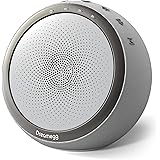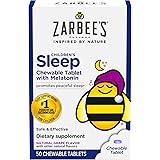Mastering Your Sleep System: An In-Depth Look at Closed Cell Foam Sleeping Pads
For outdoor enthusiasts and seasoned adventurers alike, selecting the right sleeping pad is a pivotal decision that often dictates comfort, warmth, and even safety in the backcountry. While modern inflatable pads offer undeniable plushness, they are frequently accompanied by concerns about punctures and complex setup. A reliable alternative, the closed cell foam sleeping pad, is presented in the video above as a steadfast companion for a vast array of outdoor escapades, from summer backpacking trips to formidable winter mountaineering expeditions.
These classic pieces of gear, though sometimes perceived as bulky or even antiquated, hold a unique place in the kit of many experienced outdoorsmen. Their enduring appeal stems from a core set of advantages that inflatable options simply cannot match. Understanding these benefits, and how different models perform, can profoundly influence your wilderness experience. This comprehensive guide delves deeper into the world of foam sleeping pads, expanding upon the insights shared in the accompanying video.
The Undeniable Advantages of Closed Cell Foam Sleeping Pads
The resilience and simplicity of closed cell foam sleeping pads are qualities that resonate deeply with those who prioritize dependability above all else. Unlike their inflatable counterparts, these pads are impervious to punctures and tears, meaning a rogue branch or sharp rock cannot compromise your night’s sleep. This inherent robustness allows for a carefree approach to camp setup; a suitable resting place can be established almost anywhere, without the constant vigilance required for air mattresses.
Beyond their steadfast reliability, these pads are celebrated for their lightweight nature and economic accessibility. Acquiring a quality foam pad often involves a significantly lower financial outlay compared to high-end inflatables. Furthermore, the absence of valves, pumps, or repair kits means there are fewer components that can fail, contributing to their reputation as an “effortless to set up” solution. The peace of mind that comes from such a straightforward and bombproof piece of equipment is often considered priceless in demanding outdoor environments.
Understanding R-Value: The Science of Warmth
When discussing sleeping pads, the concept of R-value is paramount; this metric quantifies a material’s resistance to heat flow, indicating its insulating power. A higher R-value signifies better insulation, meaning less body heat is lost to the cold ground beneath. The 2019 ASTM F3340 standard has brought a welcome level of consistency to R-value ratings across different manufacturers, allowing for more accurate comparisons between various sleeping pads.
Closed cell foam pads operate on the principle of trapping small pockets of air within their structure, which significantly slows the transfer of heat. For instance, pads like the Thermarest RidgeRest Classic and Z Lite Original are typically rated around an R-value of 2.0. This makes them suitable for warm-weather conditions where minimal ground insulation is required. In colder scenarios, a higher R-value becomes absolutely critical for maintaining core body temperature and ensuring a comfortable night’s rest.
Thermarest’s Enduring Legacy: RidgeRest and Z Lite Series
Among the pantheon of closed cell foam pads, Thermarest models are frequently cited as benchmarks, particularly the RidgeRest and Z Lite series. The RidgeRest Classic and Solite, along with the Z Lite Original and SOL, represent two distinct yet equally viable approaches to foam pad design. The Solite and SOL versions are distinguished by an aluminized reflective layer applied to one side, a feature that measurably enhances their warmth by reflecting radiant body heat back towards the sleeper.
This reflective surface, while outwardly appearing “cool,” serves a vital purpose in thermal management, contributing slightly to the pad’s overall R-value. It is generally recommended that the reflective side be faced upwards, towards the body, to maximize this effect. While this reflective coating can exhibit some wear and tear over extended use, transitioning from a shiny to a more matte finish, its initial contribution to warmth and perceived comfort is noteworthy. The marginal difference in cost between the classic and aluminized versions often makes the latter a preferred choice for many outdoor enthusiasts.
RidgeRest vs. Z Lite: A Closer Look at Performance
When directly compared, the RidgeRest Solite is often found to offer superior comfort and warmth, particularly on uneven or softer ground and especially in colder environments like snow. Its design typically incorporates deeper, more pronounced ridges which provide additional trapped air, translating to better insulation. This increased bulk, however, can present a challenge for those aiming for the most compact pack.
Conversely, the Z Lite SOL is favored for its more compact accordion-style fold, making it a slightly smaller package when stowed. Though its R-value hovers around 2.0, making it less ideal for true winter conditions for many individuals, it is nonetheless a popular choice among ultralight backpackers and “fast and light” mountaineers. These users often prioritize weight and packability above all else, accepting a trade-off in warmth for increased agility. Over time, it is sometimes observed that the Z Lite can become somewhat flimsy, losing some of its initial rigidity, whereas the RidgeRest tends to maintain its structure and insulating properties more effectively, often earning it a bias among long-term users.
The Discontinued but Deserving: Thermarest RidgeRest Solar
An honorable mention is often reserved for the Thermarest RidgeRest Solar, a pad that, despite its discontinuation by Thermarest, still holds significant respect. Boasting an R-value of 3.5 (under the older rating system), it represents a substantial leap in warmth compared to its slimmer relatives. This elevated insulation capability results in a noticeably more comfortable sleeping experience, especially in truly frigid conditions.
The Solar’s increased warmth naturally comes with added bulk, making it less practical for extended backpacking trips where pack volume is at a premium. Its niche, however, is clearly defined: extreme cold winter adventures where every fraction of an R-value counts, or for car camping where weight and size are not pressing concerns. For those seeking the utmost comfort and warmth from a closed cell foam pad, the RidgeRest Solar, if still procurable, remains a formidable option.
The Versatility of Layering with EVA Foam
A sophisticated approach to cold-weather sleeping systems involves the strategic layering of a thin closed cell EVA foam pad with a high-quality inflatable pad, such as a Thermarest XTherm. This hybrid system aims to harness the “best of both worlds”: the comfort, superior warmth, and packability of an inflatable pad are combined with the ease of use and puncture-proof reliability of foam.
The thin 3 to 4-millimeter EVA foam layer serves a dual purpose. Firstly, it acts as an additional insulating barrier, significantly boosting the overall R-value of the sleeping system, which is critical for maintaining warmth when temperatures drop below freezing. Secondly, it functions as a protective shield, safeguarding the inflatable pad from potential punctures or abrasions from sharp ground debris. This combination is a frequent choice for those undertaking cold weather expeditions, offering a robust and adaptable sleeping solution. EVA foam is also notable for its accessibility; it can often be purchased and custom-cut at various industrial supply stores, providing a cost-effective and tailored solution.
Competitors in the Foam Pad Arena: Exped and Nemo
While Thermarest has long been a dominant force, other reputable brands have also entered the closed cell foam sleeping pad market with competitive offerings. Exped, with its FlexMat and FlexMat Plus, and Nemo, with the Switchback, both present eggshell-style pads that bear a strong resemblance to the Thermarest Z Lite.
These pads are generally considered to be on par with the Z Lite in terms of their key specifications, including size, weight (typically around 400 grams or 14 ounces for a regular size), R-value (often around 2.0), overall feel, and price point. For many users, the differences between these options are negligible, making the choice largely a matter of personal brand preference or which model might be available at a more favorable sale price. Regardless of the brand, these folding foam pads continue to be a go-to choice for backpackers and campers who value simplicity and reliability.








